
In 1996, after being elected the first woman president of the National Rifle Association, I was invited by then-Arizona Gov. Fife Symington (R) to give a speech to the Arizona Governor’s Commission on Non-Traditional Employment for Women.
Gov. Symington expressed the thought that as the first woman president of the NRA, I might inspire women to seek “non-traditional” employment positions for women, for which—he believed—many are well qualified.
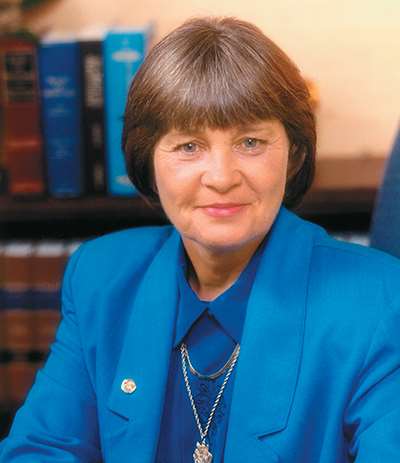
As a lover of history, I knew that women had long earned their place in history, although the recorders of history have ignored many accomplishments of women. Too many have also downplayed the ability of women to do many jobs they haven’t traditionally been given credit for.
Many history books, for example, tell us that Paul Revere was a Revolutionary War hero. We’re all familiar with “The Midnight Ride of Paul Revere.” He mounted his horse and rode from Boston to Lexington to warn the countryside that the British were on the march. He is probably the most-recognized figure of the Revolutionary War because of his well-publicized ride that was mythologized by Henry Wadsworth Longfellow’s poem “Paul Revere’s Ride.”
However, Sybil Ludington, another American Revolutionary War figure, also made a not-as-famous ride. She mounted her horse and rode through the countryside to spread the alarm that the British were attacking Danbury, Conn., where much of the region’s munitions and supplies were stockpiled. Nevertheless, history and textbooks barely mention Sybil Ludington.
Few remember that Paul Revere never finished his ride or his mission. He was captured by the British before he finished the job. History records him as a hero. Sybil Ludington, on the other hand, finished her job. Ignoring the danger of British patrols and spies, she galloped off through the dark night—over as many as 40 miles of dirt roads—to spread the alarm to the countryside and returned home safely. Nevertheless, history barely recognizes her heroics.
Paul Revere and Sybil Ludington lived at a time in our history when Americans were giving birth to a new nation. It was a time when we were laying the foundation for America’s traditions; it was a time when men and women alike did what they could to win their freedom. They were trying to break from the tyranny and oppressive practices of King George III. It was a time when many men and women alike were patriots, and gave a full measure to any task in the fight for freedom. Women and men formed a partnership in fighting the Red Coats and in carving out a new nation. Both men and women, after all, have an equal stake in preserving their freedom.
When it comes to reading history textbooks, I find myself looking around for the rest of the story, because chances are, if you look long enough and do enough research, you’ll find there’s more to the story; in fact, it can be quite different from the official narrative.
In 1776, for example, Margaret Corbin, from Pennsylvania, took the post of cannoneer in the American Revolution. After the war, the Pennsylvania Supreme Court voted for her to receive disability pay for life and gave her a clothing allowance. On that basis, one could argue that having women in the military is an American tradition dating back to 1776.
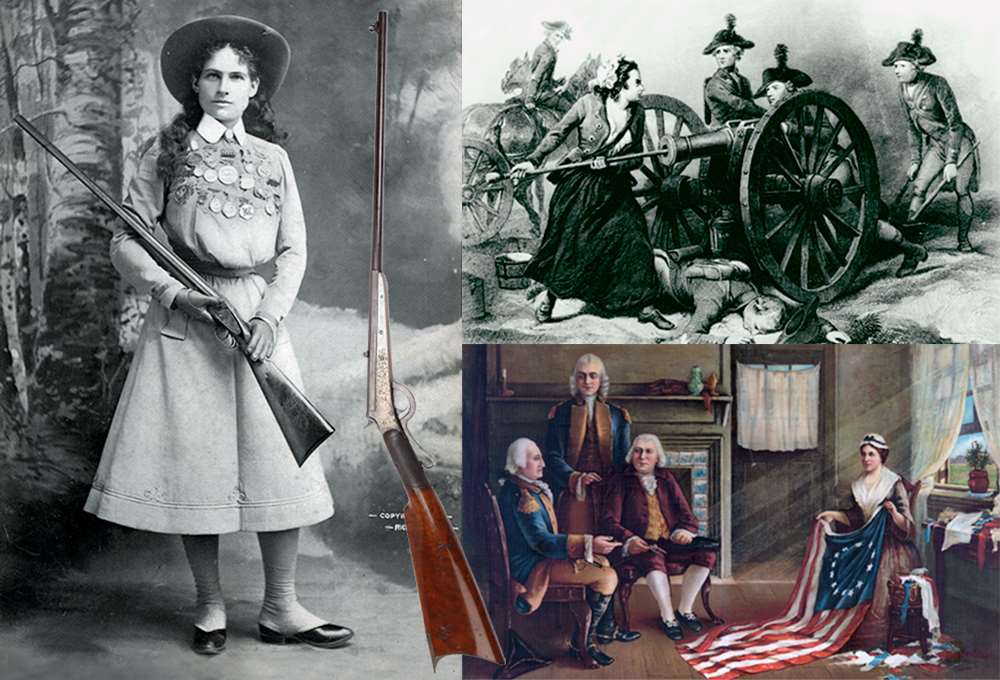
Betsy Ross is widely reported to have made the first American flag. I’m sure you’ve all seen artists’ drawings of Betsy Ross sitting with a group of women, portrayed as a ladies sewing circle, sewing the flag. But is it an accurate portrayal of history? Betsy Ross’ husband owned an upholstery shop. When he died, Betsy took over the business. She was a single, female business owner when George Washington was reputed to have commissioned her to make the flag—not a member of a ladies’ sewing circle. It was her job, not her hobby.
Did artists and the recorders of history find it more politically correct to portray Betsy Ross as a homemaker sitting at home—with the home fires burning—hosting a sewing circle of neighbors rather than a business woman hired to do the job?
From the first colonists to the pioneers who settled the frontier, both men and women did what was needed—it was a matter of survival.
During World War II, men went off to foreign shores to fight for freedom and most of the women stayed home. But did the women who stayed home hang around the house watching the children, eating chocolates and listening to soap operas on the radio? Some may have. But in overwhelming numbers, women stepped right into the jobs vacated by their husbands, fathers, brothers and boyfriends. Could they do the work? Of course they could, and they did an outstanding job!
Throughout our history, women have always done jobs that are thought to be “non-traditional” for women to do; still, women have not been widely recognized in recorded history for this. For example, the first women’s national labor organization was formed in 1869. If you want to look at “glass-ceiling” breakers in non-traditional employment, it might surprise you to know that the first recorded woman postmaster was in 1775—that’s postmaster, not postmistress. In 1834, women organized in Lowell, Mass.—when women couldn’t even vote—and created the first union of working women in American history.
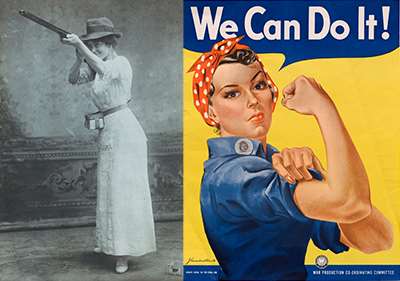
In 1849, Elizabeth Blackwell became the first woman to receive a medical degree in the United States. In 1869, Arabella Mansfield became the first female lawyer in the United States. In 1932, Amelia Earhart became the first woman—and the second person after Charles Lindbergh—to fly nonstop and solo across the Atlantic Ocean. The point is: Women, regardless of race, religion, political persuasion or political correctness can be anything they want to be and can do anything they set their minds to.
But, even today, women still have to overcome some stereotypes. We still have to take the initiative and have the courage to seize the moment. We can’t wait around for somebody to offer opportunities to us.
Clearly, to succeed in the marketplace, you must have ambition, confidence and perseverance. You must be willing to work hard, prove yourself and sacrifice to “go for the gold.”
In 1996, Kim Rhode, who was 17 years old at the time, won the Olympic gold medal in shotgun for the United States. Do you think she achieved her dream because her competition caved in? Of course not! She worked hard for that victory and earned the gold. That’s the American way. Or at least it’s supposed to be. Kim Rhode’s win in 1996 was the beginning. She is now a six-time Olympic medal winner.
Traditional and non-traditional roles are a matter of perception. And although some say perception is reality, often perception is not real, but is merely a figment of someone’s imagination or prejudice.
I would define a non-traditional job for a woman merely as a position that no woman has wanted badly enough, and has been willing to work hard enough to break through that invisible barrier that some people call “tradition” to get. So let’s not confuse qualifications with the equality issue. Being given the same opportunity to compete for a job is equality. Having to meet the same physical requirements to actually do the job is a qualification issue.
Many corporations throughout America have learned that women make excellent managers and executives. Women are accustomed to making decisions and managing a group of people with diverse personalities, ages, responsibilities and needs. They delegate responsibility, coordinate schedules, arrange transportation, manage budgets, deal with tax regulations, manage purchasing, formulate dress codes, monitor and arrange for maintenance and coordinate communications. They manage health care, education, nutrition, food service, vacation, insurance, retirement, recreation and entertainment planning. Every day, they get dressed, brush their hair, put on their make-up and go to work.
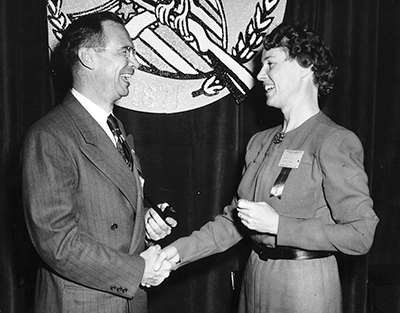
When my father was killed in World War II, we were living in tough times for single-parent families. Daycare, as we know it today, didn’t exist. So I grew up on a farm in rural South Carolina with my fraternal grandparents. I worked side by side with my grandfather in the fields and around the farm and side by side with my grandmother around the house.
Some might say that my grandparents had traditional roles, but it looked to me like they just decided who would do what. I was never told “you can’t do that because you’re a girl” or “only boys do that.” My job was to do what needed to be done and there were very few things I couldn’t do. I think my job was pretty traditional for a youngster—I had to do everything I was told to do and that was a little bit of everything.
But I do remember getting upset when my grandfather would pick up his rifle and go hunting without me. He told me I couldn’t go because I didn’t know how to shoot or how to hunt. That was a qualification issue. I was smart enough not to beg him to let me go anyhow; instead, I begged him to teach me what I needed to know to be able to go hunting. And he did. My grandfather taught me to shoot and hunt when I was six years old.
“Women are not figureheads in the NRA. We are active players and successful decision makers.”
—Marion Hammer
It wasn’t long before I was a good shot and pretty sharp at hunting. Then one day he didn’t say “go get the rifle and let’s go hunting.” Instead, he said, “Go get the rifle and get us a couple of rabbits for dinner.” Like women before me and women to follow, when I had proved I could do the job, I got it.
I was taught skills, self-reliance, confidence, perseverance, teamwork, responsibility, honesty and discipline—those core values are something all successful men and women share. My grandfather taught me to stand up and fight for my beliefs and my goals. He taught me that I could do anything I wanted to do and be whatever I wanted to be. And he constantly encouraged me to work hard and live up to my potential. He also cautioned me never to compromise my goals, my dreams or my principles.
He told me I would never truly succeed if I tried to please too many people. He said a person of principle will never compromise and admonished me to remember that “there is nothing in the middle of the road but a yellow stripe and dead possums.”
I was lucky: my grandparents believed in me and my abilities—and they taught me to believe in myself. Some women lack that confidence, but so do some men.
Unfortunately, in today’s politically correct America, I see fewer young women learning the skills and values taught by my grandparents. It seems that too many women, and young men as well, fail to understand or value a successful work ethic or to embrace self-reliance. Hard work is the only true path to achievement and success. Shortcuts tend to be short-lived.
Throughout the years, our economy has degenerated to the point where most families can’t survive on one income. The U.S. Department of Labor estimates that today, over 70% of mothers with children under 18 are working or seeking employment. For them, the traditional role of stay-at-home mothers is a myth. It has been so long since the average family could get by on one income that I don’t think you can call a stay-at-home mom traditional anymore.
The economy, driven by tax-and-spend big government, has forced women out of the home and into the workplace to help support their families. Most women no longer have a choice. It’s a matter of day-to-day survival.
In 1970, approximately 38% of women were in the workforce, according to the U.S. Department of Labor. Significantly, women make up nearly 50% of the workforce today. Many are well qualified for better jobs with better pay than they currently hold.
Still, a troubling development today is that not only have women been short-changed in history, but now freedom is taking a hit. Have you realized that many of today’s textbooks barely mention the U.S. Constitution and its first 10 amendments, known as the U.S. Bill of Rights? Even more have completely omitted any mention of the Second Amendment.
The Second Amendment is your guarantee of your right to keep and bear arms. A guaranteed right without which we could never have fought the Revolutionary War, won our freedom and formed an independent nation. A guaranteed right without which big government can take away all your freedom.
If you don’t believe that’s possible, all you have to do is look at Cuba. When Fidel Castro came to power, the first thing he did was to take guns away from Cuba’s citizens. Then he took their wealth, their property, their freedom and their dignity, and left the people with nothing. They became a nation in shambles with a desperate and demoralized people—and it happened in a few short years. Cuba’s citizens probably didn’t think it was possible either.
The National Rifle Association is an organization steeped in history and tradition and strong in the defense of the U.S. Bill of Rights. Women serve a major role in protecting the Second Amendment.
In 1996, a lot of attention was drawn to the fact that I was the first woman president of the NRA in the organization’s then-125-year history. That attention shows how little the mainstream media knows about the real NRA and the role of women in our proud history.
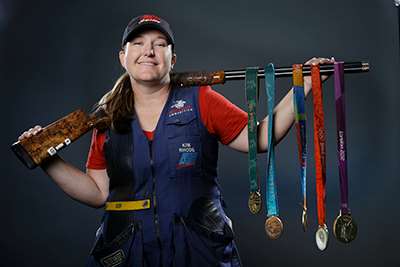
From our board of directors to our five-million members, we are an organization of dedicated volunteers. Throughout our history, the NRA has always been a family organization. Women have been trained to shoot safely and, in turn, teach others to shoot. They have been shooting competitively and actively involved in our education and safety programs for men, women and youngsters.
The first woman elected to the NRA Board of Directors was Alice Bull in 1948. Since that time there have been, and continue to be, many women who serve on the NRA Board of Directors.
I was elected NRA President in 1996. Since that time, two more women have served as NRA president.
Many women have joined me in service to our cause. Women have chaired many of the NRA’s major committees, including the Bylaws Committee, Competition Committees, Ethics Committee, Legal Affairs Committee, Membership Committee and Scholarship Committee, and have vice-chaired the Hearings Committee and Legislative Policy Committee. Women serve as trustees of our Firearms Civil Rights Legal Defense Board, the NRA Foundation Board and our Whittington Center Board, a board that governs our shooting facility in New Mexico.
In short, women are not figureheads in the NRA. We are active players and successful decision makers at all levels and in more substantial numbers than most people recognize.
Long before it became fashionable or politically correct to hire women in key positions, the NRA was benefiting from the knowledge, ability and expertise that women brought to the organization.
For 150 years, women have been an active part of the NRA. It really doesn’t matter if you’re a man or a woman. If you love America, cherish freedom, own a firearm, or care about your right to own a firearm, the NRA works for you day in and day out. I guess you could call that a tradition.


































